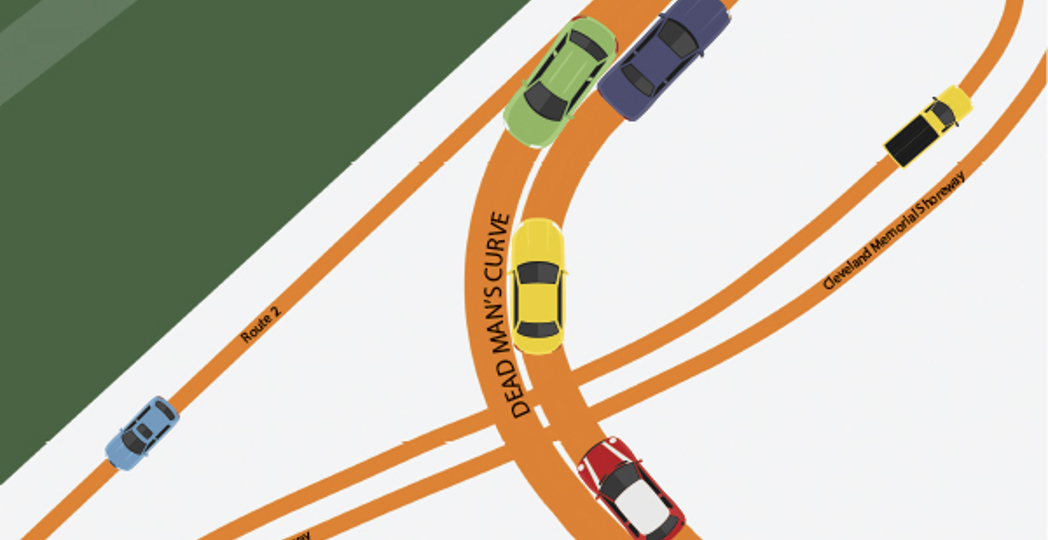CLE Myths: Dead Man's Curve
by Ilona Westfall | Nov. 25, 2019 | 1:00 PM

Maria Amador
When most people approach the flashing lights and rumble strips on Interstate-90 just east of downtown, they know what’s coming. No one wants to be another victim of Dead Man’s Curve.
The ominously named, nearly 90-degree turn has been tormenting drivers, popping up on T-shirts and making 16-year-olds rethink getting their licenses since 1959. Built to avoid the Shoreway, the Innerbelt curve requires drivers to slow to 35 mph from 50 mph.
The early 1960s saw plenty of accidents and a few deaths, resulting in the addition of the lights, rumble strips and a lowered speed limit. But Amanda McFarland, Northeast Ohio public information officer for the Ohio Department of Transportation, says the perception of danger on the curve, which sees an average of 90,000 cars a day, is a bit overblown.
“The main reason that people perceive it that way is because there are a lot of slowdowns attributed with coming into it,” she says. “So there are a lot of rear-end collisions as a result of those slowdowns and congestion leading into and through the turn.”
In fact, over the last decade (ODOT’s crash data was only available for the last 10 years), there have been zero fatalities and 150 injuries from 526 crashes, more than 50% of which were rear-end collisions or sideswipes.
Still, McFarland admits that today’s engineering standards would never allow a turn to be built like this one and plans are in the works to eventually ease the severity of the angle.
“We know there are some safety concerns and improvements that can be made to this area of downtown because we want to see these crashes going down.”
Status: Busted
Read More: Click here to read the full list of 30 Myths That Define Cleveland
Trending
-
1
-
2
-
3
-
4
-
5










